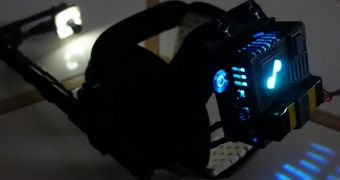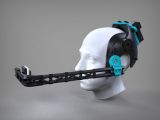You'd think that cameras are too complex, too sophisticated to be 3D printed, at least with the technology currently available, but Miles and Philip Guidon, two entrepreneuring brothers from Hollywood, beg to differ.
Well, technically, it's not the camera itself that they 3D printed, but the headgear that goes with it. Their invention is a head mounted camera, you see, or HMC for short.
You'd think that the headgear would be the least of their worries, but you'd be wrong. Making it has actually been quite challenging. The normal method takes between 3 and 4 weeks.
Head-mounted cameras need a higher degree of care than usual, when making them and the “harness,” because they have a very specific purpose.
They aren't just used to short film scenes. There's a whole set of specialized equipment for that, with tripods and support poles and everything.
No, head-mounted cameras, like the one that Philip and Miles created and which is used by companies like Ubisoft and Sega, is employed in motion capture.
You see, the figures in 3D games with complex facial expression simulation aren't programmed and virtually carved into life-like beings just like that.
Motion capture allows a camera and software to capture an actor's movements and various facial expressions.
Once enough motion data has been gathered (substantial amounts really), those expressions are implemented in games.
It's not just the camera that has to work either. Tracking markers are also involved, tiny dots placed on the actor's face, which show the camera, so to speak, what to pay more attention to, as it were. To make the animations seem realistic.
And when it comes to recording full body movements, actors have to wear specialized body suits covered in similar tracking markers. And suit calibration is very important too.
So, when an actor uses a head mounted camera to make the recording (on him or herself), it's important to make sure it's stable. Steady.
3D printing technology allowed the two entrepreneurs, and their company Mocap Design, to create the headgear quickly, cutting the full HMC manufacturing time to 45 hours instead of 3-4 weeks. A Stratasys uPrint SE Plus and, more recently, a Dimension Elite, made it all possible.
The reason it usually takes so much time to make the headgear is because each has to be specialized and customized. Also, it is produced in short runs. 3D printing allows a 3D model to quickly be built, from a scan or measurements, and for the product to be ready in just two days.

 14 DAY TRIAL //
14 DAY TRIAL // 
